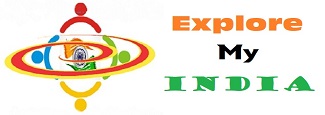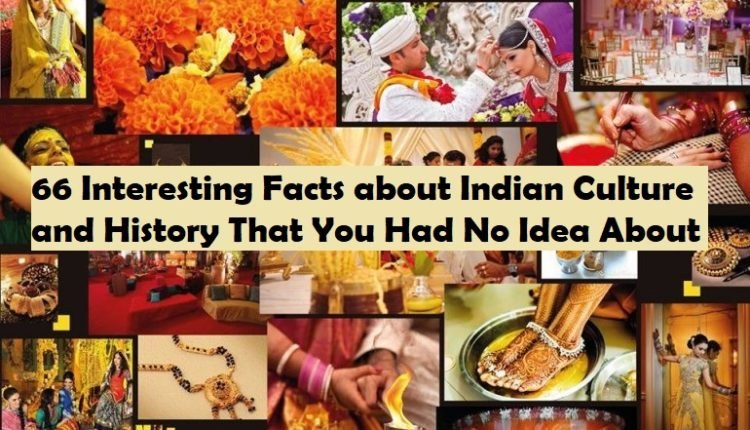Facts about Indian Culture and History
There are many Interesting Facts about Indian Culture and History of which its vast population is totally unaware of the very existence.
Here in this presentation, therefore we are trying to enlist and bring out those facts so that common people of India could be educated and the knowledge is spread to its entire masses.
66 Interesting Facts about Indian Culture and History That You Had No Idea About
1. Panchavadam, a variety of temple music of Kerela, produced by a combination of 5 different instruments, has gained so much popularity in the West that the performers are frequently invited to perform abroad. Some Westerners come to India specifically to learn it. This is one among the many snippets, which I have been talking about. For the sake of convenience, in the following paras, now I am listing out those Interesting Facts about Indian Culture and History of which people at large are unaware of. This was one of the most important Interesting Facts about Indian Culture and History.
3. Yet another most important Interesting Facts about Indian Culture and History can be counted this one. The holy verses in Arabic inscribed above central doorway of the Taj Mahal are written in such a way that all the letters appear to be of the same size when reading from below. Actually, the letters are graduated in size.
4. All sun temples were constructed in such a way that the first ray of the rising sun fell on the idols. Temples to the Sun God were built between the 4th and the 13th century.
5. The Taj Mahal is so proportionately constructed, one can never imagine that it is taller than the Qutab Minar, the tallest minaret in the world! The Taj Mahal is 243.5ft. in height while the Qutab Minar is only 239ft. This was one of the most important Interesting Facts about Indian Culture and History.
15. Milkha Singh, the ‘Flying Sikh’, participated in 82 competitions and won 79 of them.
16. The Hindola Mahal or ‘Swinging Palace’, in Mandu, is most unusual in design. From outside it looks like a sturdy fort with peculiarly sloping side walls, creating an illusion that the entire structure is swaying.
17. A dacoit-fan of the actress Meena Kumari, once made her autograph his hand with his own knife. This happened during the outdoor shooting of the film ‘Pakeezah’when the unit was stranded in a dacoit-infested area of Madhya Pradesh. This was one of the most important Interesting Facts about Indian Culture and History.
18. Jantar Mantar at Delhi has two pillars about 12 ft. in height and 17 ft apart, which determine the shortest and longest days of the year. On December 21, the shortest and longest days of the year. On December 21, the shortest day of the year, the southern pillar casts a shadow on the northern pillar, covering it entirely-starting from the base upwards. On June 21, the longest day of the year, no shadow falls on the northern pillar-absolutely ingenious.
19. At the Karnidevi Temple in Rajasthan, rates are worshipped as the deity’s descendants. So much so that they are not even referred to as rats. They are called kebabs instead, the Marwari word for children.
20. Have you ever noticed that only the one rupee notes carry the words ‘Government of India’ while all other currency notes have the ‘Reserve Bank of India’ printed on them?
21. Yet another most important Interesting Facts about Indian Culture and History can be counted this one. The Portuguese discovered a variety of plants in the New World which they brought along with them and eventually introduced to India. These include batata(potato), the curve (cabbage, which became gobi or Kobi), tobacco, tomato, cashew, Ananas(pineapple), papaya, Pera(guava or Peru). Pao (bread) and biscotti (biscuit) prepared in Portuguese bakeries became popular. Their introduction of green and red chillies revolutionised Indian cuisine.
22. The Indian wild ass called Khur, found only in the desert of the Rann of Kutch, runs faster than the horse. In fact, a relay of horses in needed to tire it out before it can be caught.
23. Despite its name, Keoladeo Ghana is not in Africa. It is a world-famous bird sanctuary at Bharatpur, Rajasthan, Keoladeo is the name of the ancient Shiva temple in the dense (Ghana) forest which once used to cover the area.
24. A life-sized, rock-cut elephant stands at the site of the Kalinga war, with Emperor Ashoka’s rock edicts inscribed in the Prakrit language, written in the Brahmi script. There is something special about these edicts-there is no mention of the Kalinga War(261 BC) in the edicts. The sculpted elephant signified Ashoka’s conversion to Buddhism after his Kalinga victory.
25. Yet another most important Interesting Facts about Indian Culture and History can be counted this one. On his visit to England in 1902 for the coronation of Edward VII, the Maharaja of Jaipur took with him in the ship, for drinking purposes, a six-month supply of Ganga water, as it is said to retain its freshness and purity for months on end.
26. The priest at the famous Vishnu Temple at Badrinath in the U.P. Himalayas, is always a Nambudri Brahmin from Kerala. Badri is one of the four Hindu monastic Mutts-the other three are at Puri, Dwarka and Sringeri, established by Adi Shankara in the 8th century.
27. The 400-year-old Jewish Town in Cochin has only 24 elderly Jews living there still-all the rest(30,000) have migrated to Israel(this was the figure in 1994).
28. We salute the memory of a Muslim saint, Baba Buden, for the wonderful gift he gave to India-coffee. The saint arrived from Arabia and settled in the mountainous country of coffee seeds which he planted for his own use. This was beginning of coffee cultivation in India.
29. Believe it or not, but India used to get its ice from the U.S.A.! The American speculators made paise(money) from pani (water) when they sent their first consignment of ice from Boston by ship when they sent their first consignment of ice from Boston by ship to Calcutta in 1833. They sold it for two annas a seer(12.5 paise a kilo in modern times). So pleased was Governor General William Bentinck, that he presented an inscribed silver cup to the crew.
30. Do you know that the word “rupee” was coined from the “rupaiya” of Sher Shah Sur, Sultan of Delhi (who drove out Humayun from India)? He had minted a coin in silver of 178 grams in 1542. When the coin was given to him, he looked at it and exclaimed “rupaiya”, meaning “beautiful”. It is a different matter that the present Indian rupee coin contains no silver-only copper and nickel.
31. Though the exact number of people who speak, read or write English is not known, it is estimated that there are more English-speaking people in India than there are in Britain.
33. Despite its claim to fame as the wettest place on earth, Mawsynyram near Cherrapunjee in Meghalaya, has a terrible scarcity of drinking water. In the absence of proper water storage facilities, all the rain water drains down to Bangladesh.
34. Believe it or not, Kanirnay is India’s largest selling publication. It is a Calmanac, that is, a calendar plus an almanac. It also has recipes, household hints and articles on various objects-all rolled into one. Printed in 7 languages and also in Braille, Kalniryana is a household name across the country.
35. Do you know that in front of the well known Samadhi of Chhatrapati Shivaji a top Raigad Fort, is a memorial to his pet dog, who is said to have jumped into the funeral pyre of his master and died?
Recommended for You:
Hinduism History: Hindus Lived 74000 Years Ago
Hindu Vedic Mantras: Ancient Spell From Vedas And Upanishads
36. Yet another most important Interesting Facts about Indian Culture and History can be counted this one. In the largest natural cave in the Himalayas, at a height of 12,729 ft., a Shiva lingam is formed of pure ice between July and August. How it happens-whether from the water dripping from the roof or by way of the frozen spring running underneath-is not known. But the lingam is said to wax and wane with the seasons or the phases of the moon. Despite the arduous journey, people throng in large numbers to Amarnath for a holy darshan.
37. The Tirthakanars of the Jains, when shown seated in a cross-legged position, may look identical but can in fact, be distinguished by their mounts-a lion for Mahavira, a serpent for Parasnatha, a bull for Adinatha and so on. These mounts are usually carved in the centre of the Tirthankaras.
38. Chidambaram, in Tamil Nadu, is the only major temple where Lord Shiva is worshipped as Nataraja(Lord of Dance), instead of the usual lingam. It is also the only temple where the 108 dance postures described in the Natya Shastra, are carved.
39. The wide circular gallery running along the interior of the dome of the Gol Gumbaz at Bijapur, 100 ft. above the ground, is so ingeniously designed that the rustle of paper, the lighting of a matchstick, or even a whisper, is amplified and echoed. No wonder it is known as the Whispering Gallery.
40. The world famous Sun Temple at Konark, was designed as a celestial depiction of Surya, the Sun God, who is believed to course across the sky in a chariot with 12 pairs of wheels. drawn by 7 horses. The 7 horses represent the 7 days of the week and each wheel represents one hour of the day.
41. Near the famous temple of Somnath, which stands at the seashore in Saurashtra(Gujrat), is a pillar facing the Arabian Sea. The pillar is constructed on such a sport that no land comes between the pillar and the South Pole.
42. In the tower of the famous Se Cathedral in Goa, which houses the holy relics of St.Francis Xavier, there is a bell which can be heard in Panjim. And yet, when one stands next to the bell, its soft melodious tones fall lightly on the ear.
43. Yet another most important Interesting Facts about Indian Culture and History can be counted this one. A huge boulder resting on a slender base, and known as Krishna’s Butter Ball, fascinates visitors at Mahabalipuram(Tamil Nadu). It is said, that even elephants cannot move it.
65. How many of us know that India leads the world in the varieties of mango, which exceed 1000! For the lay person, a langra is langra, but for the connoisseur; there is Langra Banarsi, Langra Hajipur, Langra Digha, Langra Hardoi, Langra Patna and so on. Mangoes are named after royalty, colour, flavour, taste, shape, precious stones, place and so forth.



Aadi Shankaraachaarya's period mentioned in item no.26 as 8th century does not tally with actual historical events. It is calculated at about 2600 years ago.